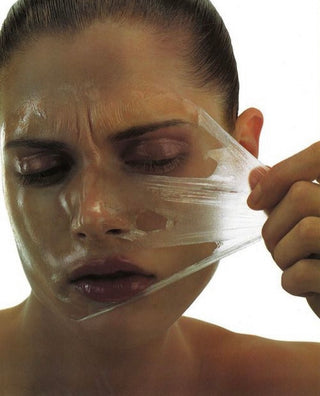
By: @drmelissacugliari
We are what we eat, assimilate and excrete. But we are also the way we eat.
The way we eat has a major impact on how our bodies function and our overall health. By implementing a few simple techniques when we eat, we can shift our health massively - leading to more energy, improved metabolism, a healthier weight, clearer complexion, lower levels of inflammation, sounder sleeps, optimized fertility, and disease prevention. By watching how we eat, it is literally possible to age slower.
Most individuals experience sharp spikes in blood sugar (also known as blood glucose) after eating. This may present as no symptoms for some or a number of symptoms for others, from mood changes, to excess energy followed by fatigue (or just flat out sluggishness), brain fog, increased appetite, cravings, and more. Long-term this can lead to weight gain, hormonal imbalances, along with many other concerns. Usually the phenomenon of the blood sugar spike is associated with diabetes, but it is important to note that type II diabetes is a disease state that typically occurs after decades of being on a rollercoaster of blood sugar dysfunction.
Instead of a sharp spike in blood sugar, it is possible to create a gradual, flatter curve in blood glucose levels and as a result, feel more satiated, energized, calm, and focused following our meals and throughout the remainder of our day. One simple way to do this is to change the order you consume the foods on your plate.
Before we delve into the order in which we eat, it is important to make note of what you are eating as this concept works best when consuming certain ingredients. Generally speaking, each meal should contain a source of protein (e.g. fish, poultry, and beef), non-starchy vegetables (e.g. leafy greens, asparagus, green beans, lettuces, mushrooms, broccoli, cauliflower, and cabbage), and a starchy vegetable (e.g. potatoes, carrots, and beets) or grain (e.g. quinoa and rice). Healthy fats like olive oil, coconut oil, avocado, raw nuts and seeds are also important and one should aim to include two tablespoons of them in each meal.
If this feels overwhelming, a relatively easy and effective place to start is adding non-starchy vegetables to each meal. While vegetables are considered a carbohydrate and are sources of naturally occurring sugars, they are imperative to include in your diet in order to ensure a smoother blood glucose curve. Vegetables contain important fibers and nutrients to protect your system from a blood sugar spike.
When it comes to the order in which you consume your foods, always start with non-starchy vegetables. For example, if you are about to consume dinner and have a plate that consists of chicken, broccoli, and potatoes, consume the broccoli first. Then, move on to the protein (in this case, the chicken) followed by starchy vegetables (ergo, the potatoes). By consuming the non-starchy vegetables first, you are providing your digestive system with a variety of beneficial nutrients, including fiber, which coats the digestive tract before the other ingredients move through the intestines. This fibrous coating prevents the system from absorbing the sugars in the other, starchier foods too quickly, buffering the blood sugar spike that would otherwise ensue.
Additional Tips
Only eat whole fruits. In other words, try to avoid any juices, purees, and even limit your consumption of smoothies. Whole fruits contain helpful fibers that slow absorption of the sugars, therefore creating a more gradual, less intense blood sugar spike.
Opt for savory breakfasts. The first meal of the day is so important to set the system up for success. Instead of consuming cereals, oatmeal, or smoothies first thing in the morning, try consuming something along the lines of two organic eggs with avocado and sautéed spinach, or an omelet with mixed vegetables made in cold pressed olive oil.
If you choose to indulge in sweets, do so as a dessert and only after you have consumed your vegetables. Avoid sweet snacks and instead, consume savory snacks. For example, opt for an apple with natural peanut butter or a handful of raw almonds, raw celery, carrots or cucumber with a sliced chicken breast. Or try limiting snacking completely for mini “fasts” between meals which allow your digestive system and metabolism to rest.
Avoid meals or snacks solely consisting of carbohydrates (also known as “naked carbs”). Ergo, avoid meals that are heavy on pastas, breads, or other processed carbohydrates without simultaneously consuming vegetables, proteins and healthy fats.
As always, seek the help of a naturopathic or functional medicine doctor for tailored dietary and lifestyle changes. Have your blood taken annually, and request to be tested for fasting insulin, fasting glucose, hemoglobin A1C, and to have your HOMA-IR level calculated. These measures can help you and your doctor assess your glucose metabolism more closely along with your disease risk. Lastly, if you’re looking to learn more about this topic, I recommend reading the Glucose Revolution by Jessie Inchauspe.
References:
https://diabetesjournals.org/care/article/38/7/e98/30914/Food-Order-Has-a-Significant-Impact-on















